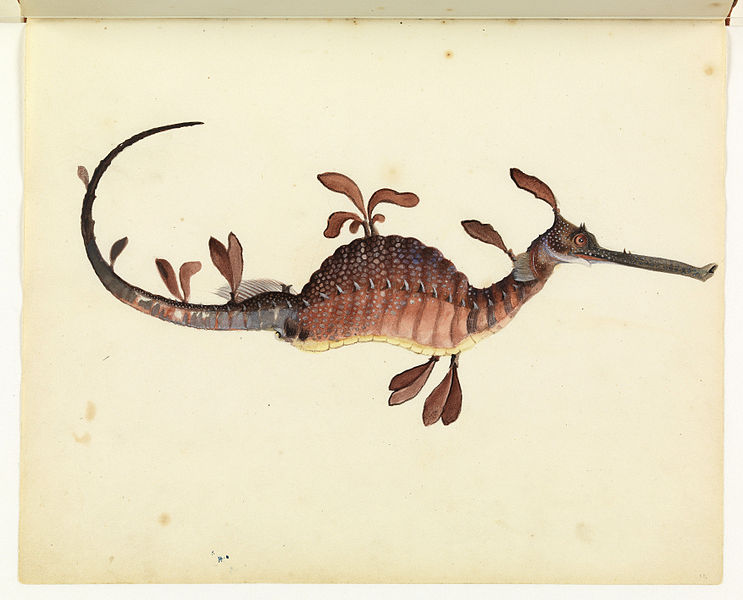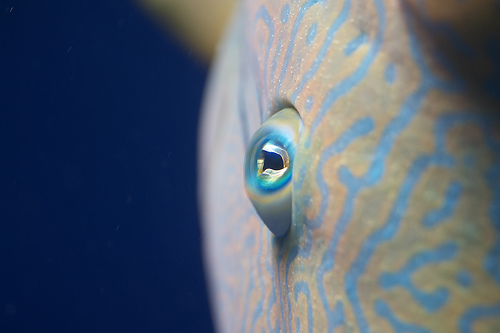 Seadragons look and sound like something that swam straight out of a book of fairytales. But they are very real. Keith Martin-Smith has been watching these beautiful creatures and taking pictures of them for 18 months in Tasmania. And he’s uncovered some of their secrets.
Seadragons look and sound like something that swam straight out of a book of fairytales. But they are very real. Keith Martin-Smith has been watching these beautiful creatures and taking pictures of them for 18 months in Tasmania. And he’s uncovered some of their secrets.
When Tasmanian artist William Buelow Gould painted this weedy dragon in 1832 he wouldn’t have know that its pattern of spots were unique to that particular fish. Martin-Smith took computer software developed to identify manta rays from their spots and tried it out on seadragons. He revealed that spotty fingerprints can be used as a cheap and simple way of studying seadragons without having to stick tags on them.
So, go count a seadragon’s spots and you’ll know which individual fish you’re looking at (you could give it a name while you’re at it).
Martin-Smith plugged his mark and recapture data into something called a Cormack–Jolly–Seber model (which sounds like fun) to work out the likely survival rate of weedies – he estimates that these larger than life cousins of seahorses could live for more than 10 years in chilly Tasmanian waters, which is quite a bit longer then Sydneyite seadragons further north.
Seadragons aren’t the first marine animals to be identified by their natural markings. There are instructions on how to identify a coelacanth from its spots; same goes for nurse sharks and anemone fish. You can even recognise a polar bear from its whiskers.
And for my PhD I worked out that adult humphead wrasse have unique patterns of scribbles on their faces – it’s where they get their nickname Maori wrasse from because some say their patterns look like Maori tattooes.

Take a look at some more pictures of weedy seadragons at the BBC and read Martin-Smith’s paper here (it’s open access).
Humphead wrass picture by tetzi.
Leave a Reply